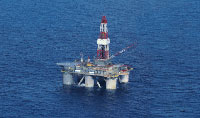Gulf of Mexico and Louisiana Asks the Help From the National Guard as Oil Spill Nears Coast
The oil spill in the Gulf of Mexico is becoming more and more of an environmental concern as time passes by. It all started with an oil rig explosion last April 20, 2010 which eventually led the oil tank to sink two days later about 40 miles off the Mississippi River delta.

Several actions were already taken by various groups to contain the oil spill threatening to pollute the nearby Gulfs posing harm wildlife and other sea creatures. British Petroleum Agency (BP) PLC, which owns the oil rig operated by the Swiss drilling company Transocean, has already dispatched more than 30 ships, capable of skimming in excess of 170,000 bbl. of oil a day, to counter any that does spill.
Several crews operating submersible robots have been trying to activate a shut-off device that would stop the flow of oil on the sea bottom 5,000 feet below but to no avail, World Correspondents reports.
Interior Department inspectors began boarding deep-water platforms in the Gulf of Mexico and Louisiana mobilized the National Guard as the slick from the worst rig spill in four decades threatened the U.S. coastline.
The U.S. will "use every single available resource at our disposal," in response to the spill, President Barack Obama said yesterday. BP Plc, which owns the leaking well, is "ultimately responsible" for paying for the cleanup, the president said. A faint sheen washed ashore on the Louisiana coastline last night, the Associated Press reported. Oil may hit Mississippi tomorrow, Alabama in two days and Florida in three, according to a government forecast.
Oil is escaping from the well at a rate of about 5,000 barrels a day, five times faster than previously estimated, according to the U.S. Coast Guard. At that rate, the volume of the leak will exceed Alaska’s 1989 Exxon Valdez accident by the third week of June, making it the worst U.S. oil spil, according to Bloomberg.
Subscribe to Pravda.Ru Telegram channel, Facebook, RSS!





